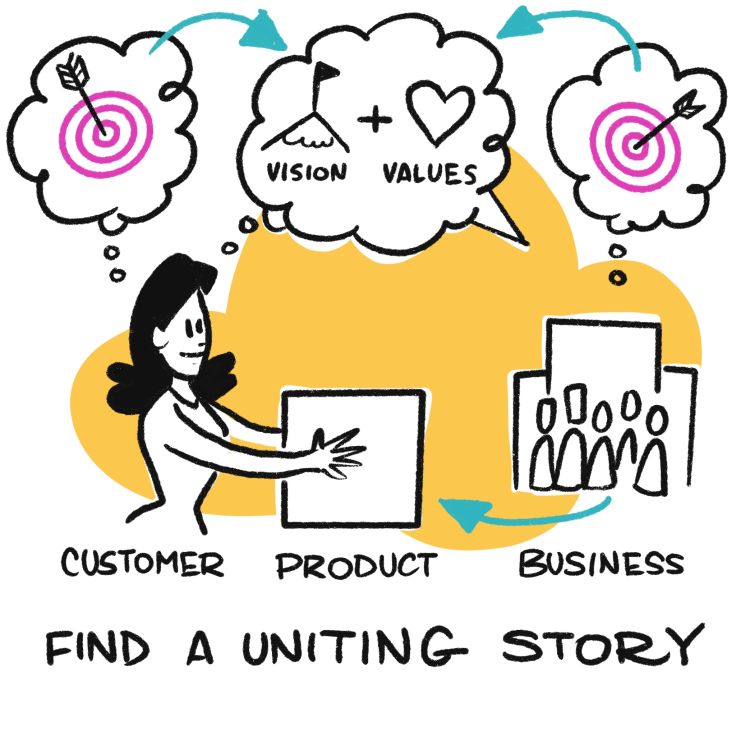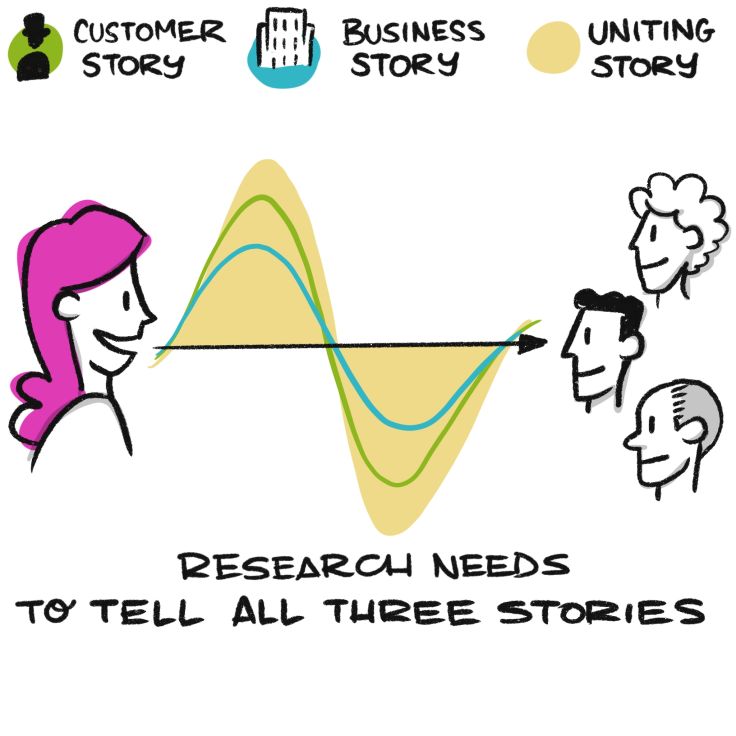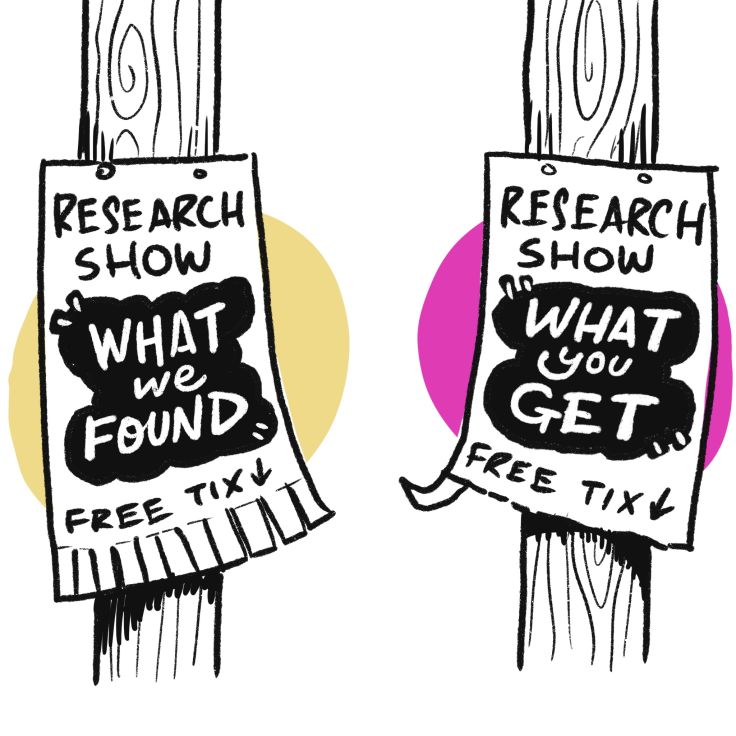The anatomy of great storytelling with Ben Crothers
Storytelling is everywhere. We are constantly reaffirming, reshaping, or dismissing narratives about the world, ourselves, other people—everything. Though the word “story” conjures up images of children’s bedtime tales, there’s far more to it. Stories are powerful vehicles for ideas and beliefs. The author Yuval Harari writes, “Homo sapiens is a storytelling animal that thinks in stories rather than in numbers or graphs, and believes that the universe itself works like a story.” The more we understand the threads of narrative around us, the more we can pull, tug, and weave them into big concepts that shape our lives and the world around us.
Ben Crothers understands this. That’s why he has spent his professional life developing his storytelling style. A designer, strategist, facilitator, trainer, and author, Crothers has mastered the many different mediums of story. Most notably, he’s known for visual communication, a topic he wrote on in his educational text, Presto Sketching: The Magic of Simple Drawing for Brilliant Product Thinking and Design, a book jam-packed full of methods and techniques to tell stories using simple drawing.
We rallied Crothers to help us dissect the inner workings of story, and importantly, to learn how to apply the principles of good storytelling to the workplace. If employed adeptly, storytelling can be a powerful tool to help work better with your colleagues, present ideas, and ultimately heighten the impact of your output.
Tips for better storytelling
Listen to your organization’s internal stories
“Great storytellers help us understand the world around us. They help us connect with who we are and where we’re at,” Crothers begins. “They help us make meaning out of all the mess.”
Researchers are well-positioned to be great storytellers. As accomplished listeners and empaths, they are not only adept at communicating customer stories, but they are also able to understand the internal stories within a business and translate them into something meaningful. Every organization has an internal narrative. Some of that narrative might come out in highly-groomed pieces, like vision and values. But it’s the unspoken, un-groomed pieces that researchers should help articulate, says Crothers. This is about showing where business and customer stories are connected and where they aren’t. Austrian management consultant Peter Drucker called the idea of an internal business narrative the Theory of the Business. This is the operating raison d'être, the driving story, or the internal values upon which a business functions. According to Drucker, businesses begin to fail when their theory of the business no longer works.
“Great storytellers help us to bring the various pieces of a puzzle together,” says Crothers. Becoming aware of the different narratives around us is the first step to successful storytelling. As researchers, Crothers says, we should think about the business, the product, the customer, and our stakeholders as all having different narratives, each with different goals, problems, and opportunities. “There’s a big, messy conversation going on where we’re all trying to inject our own story. There’s this cacophony of voices trying to have a harmonious conversation together,” he explains. “I think great storytellers and great storytelling is being able to thread a lot of those together into a common narrative.”

Know your audience
Crothers references a common issue we hear from our customers at Dovetail: researchers struggling to get recognition and buy-in for the results and insights they bring to a multidisciplinary team. “They fall flat, and often they’re falling flat because it comes up against this other belief system,” says Crothers. “It’s because those stories don’t fit the narrative that’s going on internally within the business. That’s why it’s important to use our investigative skills to find out what’s driving each person and ask questions of different people around the company. It starts with superficial stuff like, what are your objectives? So you start with a story about what that individual is trying to do,” says Crothers. But I think our job is to get the story behind the story. To find out on an individual level what really incentivizes people. What do people believe about themselves and the business?” He laughs and tells me he knows this might sound like a shrink session, but maintains its importance.

Collaborate
As a facilitator, Crothers advocates for getting all the necessary stakeholders in a room for a research briefing. Rather than business as usual, ask probing questions of your stakeholders. “Find out what they’re curious about, what they’re worried about, and what decisions they are trying to make, and find out where research can help,” he says. “Another big one is to ask what their hypothesis is, what they are speculating should happen or not happen. Then there’s the awkward question: ‘What if that doesn’t happen? What’s that going to change?’ And have a heart to heart with them. That’s how you can find out that they really are bought in.”

Present with context
“There’s a reason nature documentaries aren’t filmed in zoos,” says Crothers. “We’ve got to show the natural context. Show the product being used in its natural habitat.”
Crothers argues you shouldn’t only show tables with results or a user interface full of redlining. Communicating research insights with impact requires that you do it with appropriate context. Use dynamic ways to engage with your audience, like video snippets, storyboards, photos, journey maps, or visual metaphor. Anything to bring your insights to life, as if you’re David Attenborough showing your customer in their natural habitat, using your product or service.
Use plain language
“Stay away from business jargon,” says Crothers. “We need to learn to speak the language of business, but the language of business should not be business jargon.”
The best people in business always talk straight. They stay away from hollowed-out concepts and throwaway three-letter acronyms.
For example, says Crothers, it’s fine to talk about OKRs (objectives and key results), but don’t talk about them in the generic sense, as if you’re just trying to signal that you know what they know. Talk about specific objectives and specific results. Help them make connections between your audience’s world and the world of those you’ve just been researching.
Make the ordinary extraordinary
Establish the message you are communicating to your audience, tie it to an extraordinary detail, and relate it to what your audience is looking to get out of the research. “Find a detail in your research results that you and your audience might think is ordinary, but it’s extraordinary for the research participants,” says Crothers.
“Take the humble team lunch,” says Crothers. “When the pandemic hit, and we were all working from home, we couldn’t get together like we did before. Once restrictions eased and we could come together for a team lunch, everyone was excited because they hadn’t done it in so long. That’s an example of an ordinary scenario, turned extraordinary. Understand how people use tools and services in these situations, and you can tap into something very powerful.”
Use templates to draw out the threads of a story
As we recap the various elements of storytelling—understanding internal stories, understanding how to tell stories around our research, how to convey insights in a compelling way—Crothers interrupts me. “I’d be remiss if I didn’t mention that it can all seem quite fluffy to some people—too bad. That’s what storytelling is. From a more technical perspective, though, there’s a lot to be said for the good old humble user story and job story.”
“I’m also a fan of using problem stories. These statements encapsulate a lot of different elements into an UberEats version of the story,” explains Crothers. “For example, as a persona, role, or archetype, they need to reach a goal. To do that, they need to perform a bunch of tasks, but there’s X problem that leads to Y impact,” explains Crothers. “I’m a big fan of those Mad Libs type of games. They give us a way to structure something so that it appeals to the head and the heart,” he says.
“Telling stories in this structured way allows people to understand the impact on the people they are researching or the impact on the business. They enable us to show the impact on our colleagues. Once that impact is established, it inspires action, like a good story should. It can engage not only the head and the heart but also the hands because it’s practical.”
Written by Ben Crothers, Principle Facilitator, Bright Pilots. Ben Crothers has been involved in design since before Netscape ruled the world wide web, and in strategy and facilitation for the last 15 years. He is currently Principal Facilitator at Bright Pilots, where he helps teams in all sorts of organisations be more creative and decisive together. Previous to Bright Pilots, Ben was Principal Design Strategist at Atlassian, and a consultant at Second Road. Above all, Ben wants everyone to be just as good at the whiteboard as they are at the keyboard, to be better at thinking, communicating, and solving problems visually. He's the author of Presto Sketching: Simple Drawing for Brilliant Product Thinking and Design, and 50 Remote-Friendly Icebreakers. When he's not teaching, drawing, or running workshops, Ben enjoys extreme sports such as abstract painting and baking focaccia.

Users report unexpectedly high data usage, especially during streaming sessions.
09:46AM24 Sep, 2024
Users find it hard to navigate from the home page to relevant playlists in the app.
11:32AM9 Mar, 2024
It would be great to have a sleep timer feature, especially for bedtime listening.
15:03PM13 May, 2024
I need better filters to find the songs or artists I’m looking for.
4:46PM15 Feb, 2024Log in or sign up
Get started for free
or
By clicking “Continue with Google / Email” you agree to our User Terms of Service and Privacy Policy



